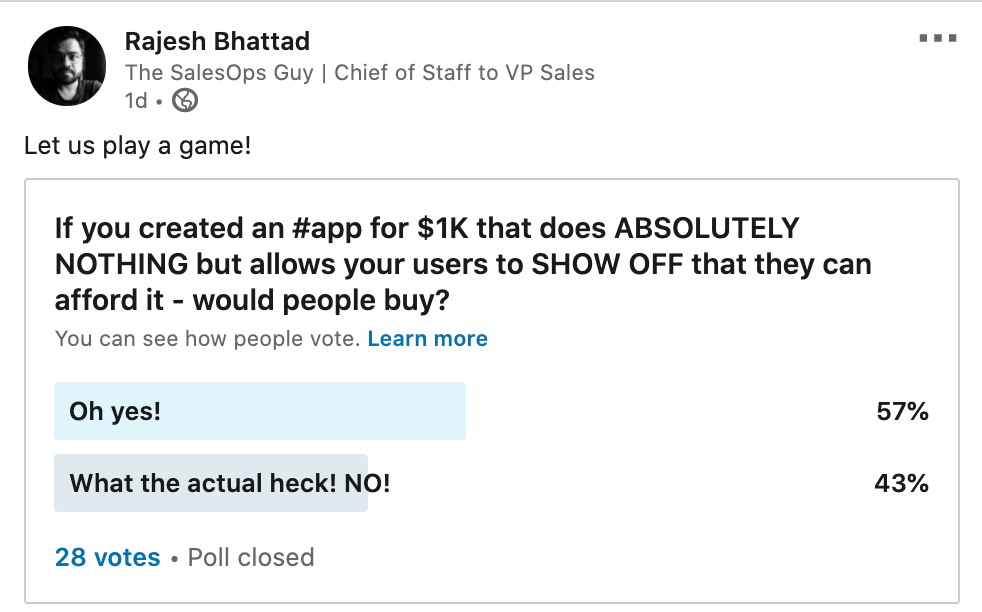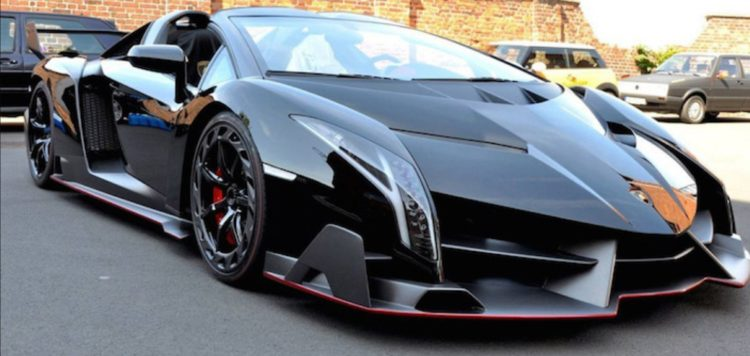I ran a poll on LinkedIn yesterday.

The poll results are out!
57% people would build an app that sold for $1000 and did nothing and the rest 43% believe people wouldn’t buy such a thing!
Before I follow-up the poll with my commentary, I want to take you through two real-life experiments. I would also encourage you to read through the comments on the LinkedIn polls – some very interesting observations there.
Experiment 1: Caltech and Stanford conducted an experiment where a group of people were invited for wine tasting. Two groups, same wine, different story. One group was told the wine was more expensive than the other group.
The outcome being people who were told the wine they drank was more expensive not only rated the same wine more highly than the group, but the MRI scans of participants’ brains while they were drinking the wine showed that participants who were told they were drinking the more expensive wine in fact enjoyed the experience more.
Experiment 2: A set of patients were given a placebo pain killer. One set of participants who took the fake pain-killing drug were told it cost $2.50 per pill and the other set was told the same fake pill cost just 10 cents each. The result? The group that was told it cost $2.50 each experienced more pain reduction during a series of shocks than participants who were told the pill cost only 10 cents!
You ask: Rajesh! But how does this tie up with the show off app that costs $1000 and does nothing?
The answer? Everything!
Price and perception play heavily into our purchasing decisions.
We’re motivated to splurge because we’re seeking peak experiences.
Michael Norton, Psychologist and Professor of Business Administration at Harvard Business School
I once had a boss who hated iPhones but bought one anyway (along with an Android he used for his daily use) simply coz “customers then think of me as someone who belongs in their circle”.
You see suddenly your ability to afford something luxurious opens up certain social circles for you (iPhones are expensive in India and just five years ago owning one meant you were “rich”).
Exactly the reason why the term “veblen goods“exists. A Veblen good is a type of luxury good for which the demand for a good increases as the price increases. Examples include designer watches, exclusive jewellery, limited edition cars.
There are only 12 Lamborghini Veneno Roadsters in private ownership ever. That’s your veblen good right there.

And hence the app in the poll existed for real on App Store – it was called “I Am Rich” – sold for $1000 and eight people downloaded it in a week’s time before Apple took it down to complaints of violation.
But then the app maker came with a newer edition of the app for $9.99 called “I Am Rich Lite” with pseudo features that practically mean nothing but met Apple’s policies and some still bought it to show they could afford it!
We live in a world where we don’t buy what we need but what we are marketed.
Nice i really enjoyed reading your blogs. Keep on posting. Thanks
LikeLike